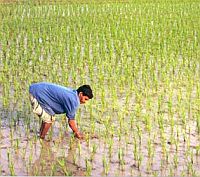Ann De Ron
BRUSSELS, Mar 1 2007 (IPS) – A growing number of people are getting addicted to tranquillisers and other prescription drugs, and this abuse is set to exceed illicit drug abuse, the International Narcotics Control Board (INCB) warns in a report published Thursday.
Thanks to prevention campaigns youngsters are thinking more that heroin is something for losers, INCB vice-president Robert Lousberg told IPS. The mean age of heroin addicts is rising those are the existing junkies that are aging. Also the number of cocaine junkies is reducing.
India is an exception. Cocaine used to be too expensive there, but these days the newly emerging rich are turning towards it, Lousberg said.
The report is significant. The INCB is an international organisation headquartered in Vienna. It was set up in 1968 to monitor implementation of the United Nations international drug control conventions.
While the organisation sees a fall in abuse of drugs such as heroin, it sees new dangers arising. The other side of the medal of the decrease in hard drug addicts is the abuse of prescription drugs. Those seem more innocent than hard drugs, but they are not, Lousberg said.
The report says people addicted to painkillers, stimulants, sedatives and tranquillisers often explicitly choose these drugs. They do not use them as an alternative for an illegal hard drug.
In the United States, abuse of prescription medicines has gone beyond the abuse levels of practically all illicit drugs, with the exception of cannabis. In 2003, 15 million North Americans abused prescription drugs, says the report. That is almost double the figure of 1992.
Such abuse of prescription drugs is serious also in parts of Africa, South Asia and Europe. In Nigeria pentazocine, an analgesic, is the second most common drug injected.
The analgesic buprenorphine, prescribed as substitution treatment for drug dependency, is the main injected drug in most parts of India. In France and the Scandinavian countries it is trafficked and abused in tablet form.
The INCP report estimates that in France between 20 and 25 percent of the drug is diverted to the illicit market.
In Brazil, Argentina, the Republic of Korea, the United States, Singapore and Hong Kong there is a rising trend of abuse of anorectics for slimming.
The demand for such drugs has worsened the problem of illegal production and sale of medicines. The World Health Organisation estimates that 25 to 50 percent of medicines consumed in developing countries are counterfeit.
What is really new is that the illegal sales are now extending to include addictive products, said Lousberg.
Three types of medicines flow into illegal sales: medication produced without licence, fake medicine containing no active ingredient, and medicines that were produced legally but landed in the illegal circuit through theft by people visiting several doctors and getting them to prescribe drugs they will not consume themselves.
In developing countries it is easy to get medicines on street markets. In the west the distribution is taking off through illegal Internet pharmacies.
Those pharmacies are a new phenomenon that greatly worries us, said Lousberg. Internet pharmacies are a good thing to ease the communication between physicians and pharmacies, but the small percentage of illegal ones is a serious threat to public health.
These pharmacies often accept faxed prescriptions, which makes forging easy. Also there is usually no contact between physician and patient, and often the medicine is more expensive than at a regular pharmacy, Lousberg said.
A lot of people will know the pharmacies by the emails they send to sell Viagra if you go to the websites you will notice they often sell highly addictive medication as well.
The report warns of other dangers where users create their own drugs with the help of instructions on the Internet. They may often extract the active ingredient from medications to make a more powerful drug.
The International Narcotics Control Board has asked all governments to alert their law enforcement officers to rising trafficking and abuse of pharmaceutical products. It is also asking governments to collect data on abuse of pharmaceutical preparations in surveys on drug abuse.


